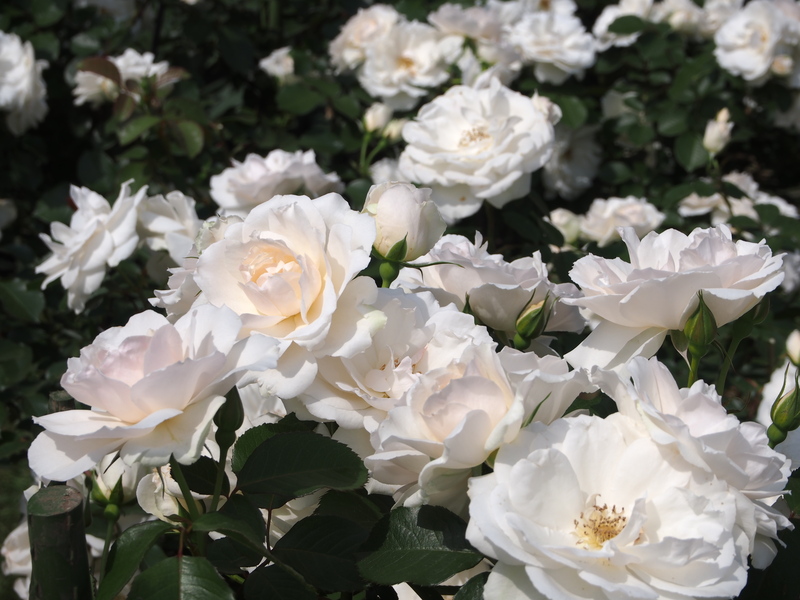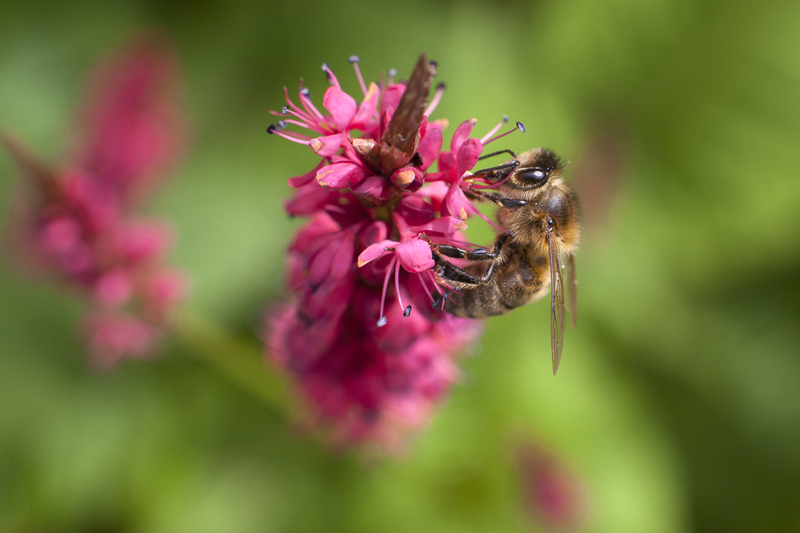Elevate Your Orchid Care Routine
Posted on 10/06/2025
Elevate Your Orchid Care Routine: Expert Tips for Thriving Orchids
Orchids are among the most captivating indoor plants, celebrated for their exquisite beauty and mysterious allure. However, keeping them healthy requires more than just basic attention. If you're eager to elevate your orchid care routine and enjoy bountiful, beautiful blooms year-round, this comprehensive guide is designed for you. We'll delve into essential care practices, troubleshooting advice, and advanced techniques to ensure your orchids thrive and become the centerpiece of your home or collection.
Understanding Orchids: The Foundation of Superior Care
Before diving into advanced orchid care, it's crucial to understand what makes orchids unique compared to other houseplants. The orchid family (Orchidaceae) is vast, with over 25,000 species. Every species has its own specific requirements, but many cultivated varieties share common needs.
Main Types of Orchids for Home Growers
- Phalaenopsis (Moth Orchid): Excellent for beginners, blooms last for months
- Cattleya: Known for large, fragrant flowers
- Dendrobium: Durable and diverse
- Miltonia (Pansy Orchid): Noted for their sweet fragrance and colors
- Oncidium (Dancing Lady Orchid): Delicate, cascading blooms
Knowing your orchid's type will help you tailor your care routine and get the best results.

Light: The First Step to Healthier, Happier Orchids
Light is the most important factor in upgrading your orchid care. Orchids are adapted to dappled light in their native tropical environments. Most thrive with bright, indirect sunlight--too much can scorch leaves, while too little stifles blooms.
Tips to Enhance Orchid Lighting:
- Place orchids near east or west-facing windows for gentle light.
- If sunlight is too strong, use a sheer curtain to filter rays.
- Rotate your orchid weekly for even growth.
- Consider supplemental grow lights in winter or low-light settings to maintain a robust orchid care routine.
Watering: Perfecting this Essential Orchid Care Habit
One of the quickest ways to damage an orchid is with improper watering. Unlike many houseplants, orchids detest soggy roots. Precision is key, and a tailored watering schedule is the mark of an experienced orchid grower.
Guidelines for Optimized Orchid Watering:
- Check before watering: Stick your finger 1-2 inches into the potting media--if it's dry, it's time to water.
- Water early in the day to allow foliage to dry before nighttime.
- Reduce watering during winter months and after your orchid's blooming period.
- Use room temperature, non-chlorinated water for best results.
- In general, most orchids do well with weekly watering, but adjust based on your plant's environment.
Never let your orchid sit in standing water! Good drainage is non-negotiable for thriving orchids.
Humidity and Temperature: Mimicking Nature for Better Growth
Orchids naturally flourish in environments with higher humidity and stable temperatures. If you want to elevate your orchid care routine, creating the right microclimate is essential.
How to Boost Humidity for Orchids:
- Group plants together to create a mini humid zone.
- Use a humidity tray--a shallow tray filled with pebbles and water--to subtly raise humidity around the orchid pot.
- Mist leaves with soft, filtered water in the morning--but avoid overdoing this to prevent fungal issues.
- Invest in a humidifier for precise control, especially in dry, centrally-heated rooms.
Most orchids prefer day temperatures of 65-75?F (18-24?C) and night temperatures around 10?F cooler. Gradual temperature drops at night can even trigger some species to bloom.
Orchid Potting Media & Repotting Techniques
Proper potting is vital if you want to enhance your orchid care. Unlike traditional houseplants, orchids do not grow in soil. They need a fast-draining, airy growing medium to mimic their natural, epiphytic lifestyle.
Best Potting Mix for Orchid Health
- Bark chips: Promote aeration and drainage
- Sphagnum moss: Retains moisture, ideal for young orchids
- Perlite: Improves structure and helps resist compaction
Repot Your Orchid When:
- The media breaks down (every 1-2 years)
- Roots are overcrowded or spilling out of the pot
- You notice declining health or lack of blooms
To repot, gently remove the orchid, trim any dead roots, and place it in fresh media. Use clear pots (when possible) to monitor root health and moisture levels.
Fertilizing Orchids to Promote Lush Growth & Blooms
To truly elevate your orchid care routine, feed your plants properly. Orchids are relatively light feeders, but regular, balanced fertilization is essential for growth and flowering.
Orchid Fertilizing Tips:
- Use a balanced orchid fertilizer (e.g., 20-20-20) or one designed specifically for orchids.
- Fertilize every 2-4 weeks during active growth, diluting to half the recommended strength.
- Flush the media monthly with clear water to prevent salt buildup.
- During winter rest periods, reduce fertilizing frequency.
Remember the mantra: "Weakly, weekly." Less is often more for healthy, resilient orchids.
Pruning and Grooming: Keeping Your Orchids at Their Best
Pruning is vital for encouraging repeat blooms and preventing disease. Make it part of your upgraded orchid care regimen.
Pruning Guidance for Orchids:
- After flowers drop, trim the bloom spike above a node to encourage new growth (especially in Phalaenopsis).
- Remove dead or yellowed leaves and spent sheaths.
- Sterilize your tools between cuts to prevent spreading diseases.
This will not only keep your plants looking fresh but also minimize risks of infections and pests.
Pest & Disease Prevention: Advanced Orchid Care Strategies
Orchids can attract a variety of pests and suffer from fungal diseases if neglected. Part of a superior care routine is vigilant observation and rapid intervention.
Common Orchid Problems to Watch For:
- Mealybugs and scale: Wipe off with alcohol-soaked cotton or use insecticidal soap.
- Spider mites: Increase humidity and spray with water; use safe miticides if needed.
- Root rot: Avoid overwatering and repot into fresh media if detected.
- Leaf spots or fungal infections: Remove affected areas and improve air circulation.
Early detection and consistent care will help you avoid most major issues and keep your orchids flourishing.
Encouraging Orchids to Rebloom: Secrets to Spectacular Flowers
Getting those graceful floral displays year after year is the sign of a masterful orchid care routine. While some orchids bloom on a set schedule, others need a gentle nudge.
Advanced Tips for Reblooming Orchids
- Provide 10-15?F temperature drops at night for several weeks during late summer or fall.
- Ensure bright, indirect light--many orchids won't bloom in dim corners.
- Don't skip rest periods; let your orchid "rest" for a month between bloom cycles.
- Fertilize lightly during the rebound stage with a bloom-boosting formula (higher in phosphorus).
Patience and consistency are key. Eventually, with attentive care, most orchids will reward you with stunning reblooms.
Integrate Mindfulness & Joy into Your Orchid Care Routine
Caring for orchids is about more than merely following guidelines. It's an opportunity to indulge in a restorative, mindful practice. As you water, prune, or repot, take time to observe your plant's subtle changes and appreciate its unique beauty.
Many orchid enthusiasts find joy and calm in steady care and witnessing growth over months or years. Elevating your routine can, in turn, elevate your home environment--and your wellbeing.

Elevate Your Orchid Care Experience: Pro Tips & FAQs
- Rotate your orchid regularly so all sides receive equal light for uniform growth.
- Keep a care journal to track watering, fertilizing, and blooming cycles.
- Quarantine new orchids for a week before introducing them to your main collection.
- Experiment with mounting orchids on wood or cork for an exotic, natural look.
- Upgrade your pots to clear or slotted varieties for improved root health monitoring.
- Explore orchid societies and forums for expert advice and community support.
Frequently Asked Questions about Elevating Your Orchid Care:
How often should I water my orchid?
Most orchids thrive with once-a-week watering, but adjust based on temperature, humidity, and potting media. The top rule is: never let roots sit in water.
Why isn't my orchid blooming?
Possible causes include insufficient light, improper temperature drops at night, or lack of nutrients. Review your routine and tweak each factor to promote reblooming.
Should I mist my orchids?
Misting can help increase humidity, but excessive moisture on foliage may cause disease. Mist lightly in the morning and use it primarily as a humidity boost in dry environments.
Do orchids need to be fertilized when they're not in bloom?
Yes--regular, diluted fertilization sustains healthy leaves and roots, preparing your orchid for its next blooming phase.
Conclusion: Enjoy Lush, Lasting Orchid Blooms
By elevating your orchid care routine, you invest in the long-term health and beauty of your cherished plants. A blend of informed practices--precise watering, tailored lighting, optimal humidity, strategic feeding, and mindful observation--will ensure your orchids not only survive, but truly thrive.
Transform your orchid care from a simple task to a rich, rewarding ritual. With patience, persistence, and the right knowledge, spectacular blooms and vigorous growth are within your reach--making every effort worthwhile in your journey as an orchid grower.
Ready to take your orchid collection to new heights? Start today by implementing just one of these expert strategies, and watch as your orchids flourish and your passion for these beautiful plants grows ever deeper.

